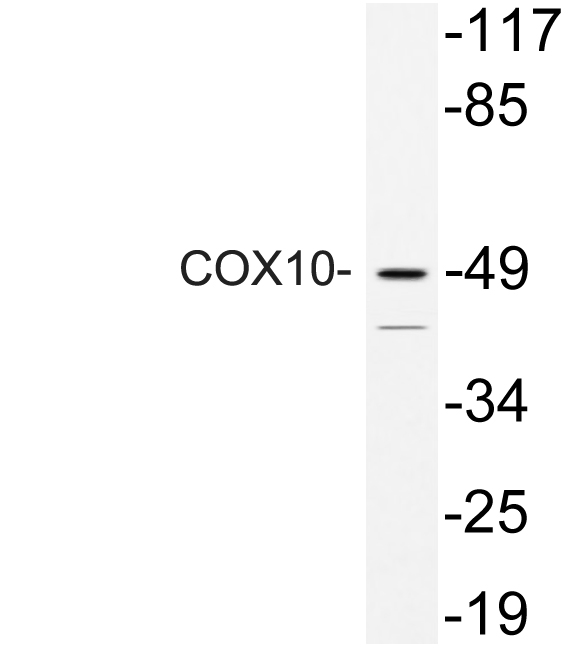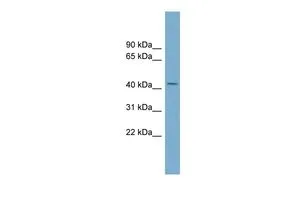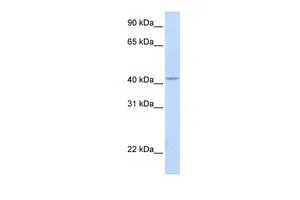COX10 antibody
GTX114331
ApplicationsWestern Blot
Product group Antibodies
TargetCOX10
Overview
- SupplierGeneTex
- Product NameCOX10 antibody
- Delivery Days Customer9
- Application Supplier NoteWB: 1:500-1:3000. *Optimal dilutions/concentrations should be determined by the researcher.Not tested in other applications.
- ApplicationsWestern Blot
- CertificationResearch Use Only
- ClonalityPolyclonal
- Concentration1 mg/ml
- ConjugateUnconjugated
- Gene ID1352
- Target nameCOX10
- Target descriptioncytochrome c oxidase assembly factor heme A:farnesyltransferase COX10
- Target synonymsMC4DN3, protoheme IX farnesyltransferase, mitochondrial, COX10 homolog, cytochrome c oxidase assembly protein, heme A: farnesyltransferase, COX10, heme A:farnesyltransferase cytochrome c oxidase assembly factor, cytochrome c oxidase assembly homolog 10, cytochrome c oxidase assembly protein, cytochrome c oxidase subunit X, heme A: farnesyltransferase, heme O synthase
- HostRabbit
- IsotypeIgG
- Protein IDQ12887
- Protein NameProtoheme IX farnesyltransferase, mitochondrial
- Scientific DescriptionCytochrome c oxidase (COX), the terminal component of the mitochondrial respiratory chain, catalyzes the electron transfer from reduced cytochrome c to oxygen. This component is a heteromeric complex consisting of 3 catalytic subunits encoded by mitochondrial genes and multiple structural subunits encoded by nuclear genes. The mitochondrially-encoded subunits function in electron transfer, and the nuclear-encoded subunits may function in the regulation and assembly of the complex. This nuclear gene encodes heme A:farnesyltransferase, which is not a structural subunit but required for the expression of functional COX and functions in the maturation of the heme A prosthetic group of COX. This protein is predicted to contain 7-9 transmembrane domains localized in the mitochondrial inner membrane. A gene mutation, which results in the substitution of a lysine for an asparagine (N204K), is identified to be responsible for cytochrome c oxidase deficiency. In addition, this gene is disrupted in patients with CMT1A (Charcot-Marie-Tooth type 1A) duplication and with HNPP (hereditary neuropathy with liability to pressure palsies) deletion. [provided by RefSeq]
- Storage Instruction-20°C or -80°C,2°C to 8°C
- UNSPSC12352203






